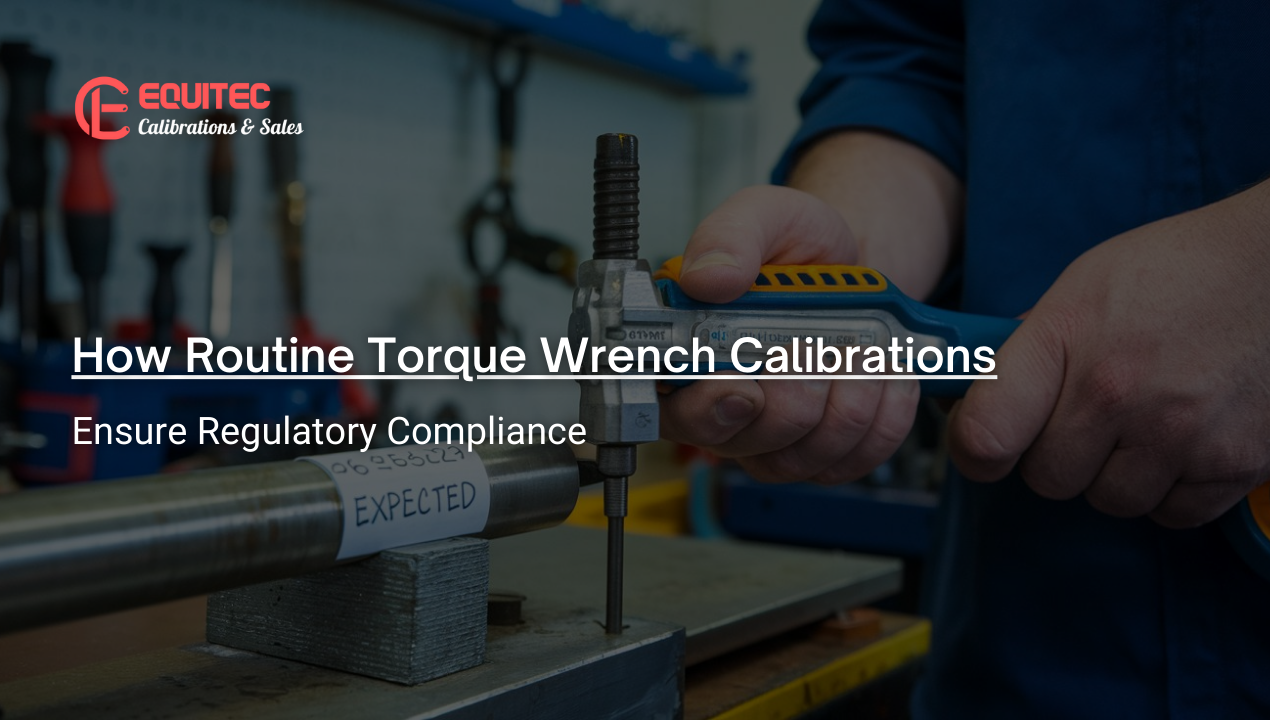Torque wrenches play a critical role in the protection, integrity, and durability of components in the space, automobile, and engineering industries. Fasteners have a certain standard degree of torsional force that should be secure. When the fasteners are tight beyond the point, they become bent or may even shatter.
During your equipment use the fastener may become loose, breaking off during the use. This is why Torque Wrench Calibrations are directly proportional to quality and safety in every other application of engineering.
There is truth in the hypothesis that the higher the accuracy of the readout, the higher the safety. Also, the chances of drastic mishaps resulting from readout inaccuracies are lower. Due to this, state compliance factors so that torque equipment can be accurate.
When Should a Torque Wrench Be Calibrated?
If the torque wrench has been exposed to a torque value higher than its maximal torque. When it requires repair or when it has been mishandled. it will need calibration. Here are some more scenarios for Torque Wrench Calibrations:
Torque wrenches need to be calibrated annually, or every 5,000 uses. This frequency is sometimes reduced depending on the user or organisation’s need.
- If a torque wrench has been overloaded to a point beyond. it’s most, repaired recently, or mishandled, it should be recalibrated immediately.
- Users are free to set their calibration schedules but must otherwise adhere to control test protocols. It involves, for instance, recording where you got all your measurements (traceability). Noting errors made in taking these measurements. And estimating the uncertainty of making those measurements.
Common Types of Torque Wench
- Beam: Thus, you just have a few inches of lever arm (beam) depending on the hand part of the torque bar. It displays your torquing force applied. The handle is subject to a generalised force that remains fixed relative to the measured position. But the second asymmetrically oriented beam supports no external load and so deflects less. At the end of the secondary beam is an indicator that points to a scale on a reading plate. It provides torque values in Newton meters (Nm). These beam torque wrenches are quite elementary as well as reliable for the type of work they do.
- Clicker: Clicker torque wrenches will enable you to preset your torque value. The built-in clutch mechanism makes an audible click when it has reached the desired level of torque. A right-sized and effective feature for the home mechanic using hand tools. This ensures incredible precision, and the clicker torque wrenches are ideal in the oil and gas industries.
- Dial: A dial torque wrench is a means of quality control rather than using it to tighten or loosen bolts. The user sets these readings at any specific Nm torque to ensure consistent values for easy reading. Their precision is so incredibly high that they are often used as reference dimensions in aerospace and automotive check measurements.
- Electronic: As with dial torque wrenches, the electronic ones are for checking torque values. Where they do differ is in the fact that they have no internal mechanical system to gauge torque. It relies on an electronic sensor and screen. The measurements can be electronically stored and archived for traceability and quality control purposes.
Why Is Opting For Torque Wrench Calibrations Important?
Torquing fasteners to a specific specification is the main use for a torque wrench. Torque is a characteristic of working with machinery. And it must be applied accurately for both the safety and operation of machinery.
Also, tightening any fastener can lead to damaged equipment or cause catastrophic failures. On the other end, a fastener that is not tightened enough would risk equipment failure or even breakdown.
How to Calibrate a Torque Wrench?
By comparing the readings of a torque wrench to a known standard. You can ensure that the tool is indeed measuring applied torque. Normally, this process is a Torque Wrench Calibrations machine where known amounts of force are applied.
Calibration is made when the machine provides a fixed torque to the wrench and retrieves its response. Differences between the applied force and what the wrench reads are recorded. The technician simply corrects the torque wrench accordingly to make it read accurate measures of torque.
Conclusion
That is the reason torque wrenches need frequent calibration to enhance their reliability. And the appropriate amount of torque for fasteners. Not only does this prolong the life of the tool. But it also increases safety and effectiveness in some of the most demanding uses.
Calibration avoids wastage, damage, and malfunction of a tool. Hence, it is a good practice for any facility that uses precision torque tools.

